
Samuel Oldknow (5 Oct 1756-18 Sep 1828) was born at Anderton, Lancashire, and he served an apprenticeship at his uncle's drapery business in Nottingham. In 1784 he moved to Stockport with the intention of building a cotton mill there in order to expand the muslin manufacturing business he had initially established at Anderton in 1782. Here he bought Hillgate House (NoteHillgate House is listed Grade II, List Entry No. 1356832.) for his residence and a warehouse on Higher Hillgate. The nearby Carr Silk Mills* also came into his possession and he used these for cotton-spinning while his own mill was being built on Higher Hillgate. At his new mill he installed spinning mules, invented by Samuel Crompton in 1779, and looms, the mill being powered by a Boulton and Watt steam engine.
Muslin is plain-weave cotton textile woven in a wide range of weights from sheer to coarse fabric.
It is mainly used to make dresses Sheer muslin dress, c.1815., curtains and sheets.
Sheer muslin dress, c.1815., curtains and sheets.
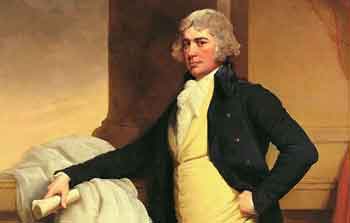
Samuel Oldknow.
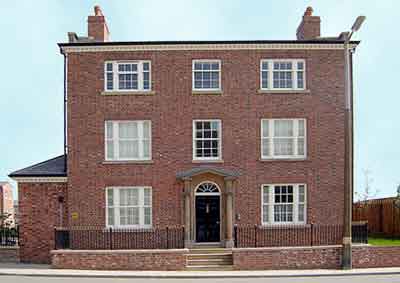
Hillgate House, Higher Hillgate, Stockport.
The house is seen here after restoration in 2007.
Oldknow was a highly motivated and ambitious man who wanted to expand his business interests but, as he was lacking in financial skills, he was unable to raise capital in London where he sold his textile products. Consequently, he turned to his friend, Richard Arkwright Junior of Cromford, for substantial loans, which were granted to him. He was then able to expand his interests to the Mellor and Marple areas and, commencing in 1790, he built Mellor Mill for mule spinning (NoteMellor Mill was situated on the east side of the river Goyt off Lakes Rd, Mellor (53.39297, -2.05104). It was destroyed by fire in 1892.). In addition, he built Mellor Lodge (NoteMellor Lodge was situated near Mellor Mill adjoining Bottoms Bridge (53.39235, -2.05249). It is no longer extant.) as his residence, Marple Lodge (NoteMarple Lodge was situated on the west side of the river Goyt on Lakes Rd, Marple, adjoining Bottoms Bridge (53.39348, -2.05327). It is no longer extant.) for his half-brother, John Clayton, and an Apprentice House, known as Bottoms Hall (NoteBottoms Hall and adjoining Farmhouse are situated on the east side of the river Goyt off Lakes Rd, Mellor, about 370 yards south east of Mellor Mill (53.39069, -2.04778). They are listed Grade II, List Entry No. 1242266, with the names Old Hall and Old Hall Farmhouse.). Simultaneously, he became a major promoter for the construction of the Peak Forest Canal and Tramway to supply limestone and coal to a battery of lime kilns that he built at Marple.
In order to provide homes for his workforce he built houses for them at Stone Row and Brick Row in Marple and at Red Row in Mellor. He also built All Saints Church in Marple, as a replacement for a timber-framed church dating from the second half of the 16th century, which opened in 1811.
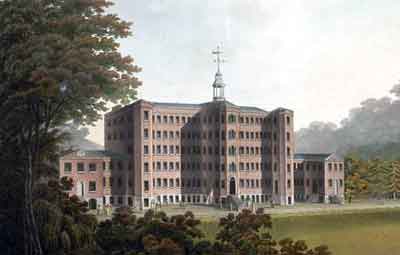
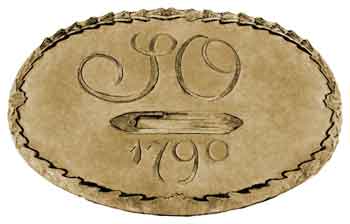
The south-east elevation of the Mellor Mill.
Construction work on the Palladian-style Mellor Mill commenced in 1790 and it opened in 1793. It was a large six-storey, brick-built structure 400-feet long by 42-feet wide. Work for this water-powered mill involved the diversion of the river Goyt and the construction of three millponds, one of thes now being known as the Roman Lakes Leisure Park.
Palladian architecture is a style derived from building designs by Venetian architect Andrea Palladio (1508/80). Palladio's work was based on the symmetry, perspective and standards of the classical-temple architecture of the Ancient Greeks and Romans.
Plaque from Mellor Mill.
This plaque was set in the central triangular pediment of the north-west elevation of the mill. It depicts Samuel Oldknow’s initials, a shuttle and the year 1890, which records the year that construction of the mill commenced.
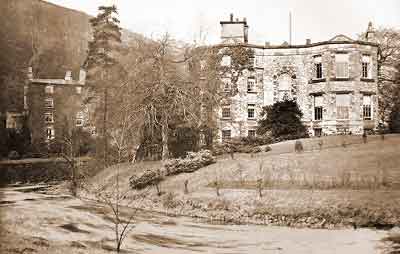
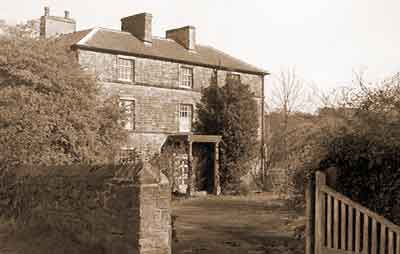
Marple and Mellor Lodges.
Viewed from the Marple side of the river Goyt, Marple Lodge is on the left and Mellor Lodge is on the right.
Bottoms Hall.
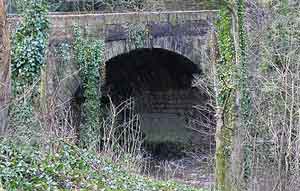
Bottoms Bridge.
View looking downstream of the river Goyt. Marple Lodge was to the left and Mellor Lodge to the right.
The bridge is listed Grade II, List Entry No. 1242088. To the east of the bridge and the site of Mellor Lodge there is a bridge over a mill stream listed Grade II, List Entry No. 1260187.
In 1794 Oldknow sold his mill and house on Higher Hillgate, to William Radcliffe of Mellor. Subsequently, the mill was closed and the hat manufacturers, Christy & Co, occupied the site. This hat works remained open until 1997 following which it was demolished but Hillgate House was left standing.
Although the doors and windows of Hillgate House were boarded up, it began to suffer from the effects of vandalism and the weather and soon it was in a state of disrepair. However, as a result of the Hillgate Townscape Heritage Initiative Scheme, supported by the Heritage Lottery Fund, the Hillgate Regeneration Scheme commenced and the house was saved. Because of its historic importance and connection with Samuel Oldknow, the house is listed as a Grade II building. It has now undergone a sensitive restoration by Fairclough Homes and on completion it contained seven apartments.
Prior to the commencement of the development, an archaeological survey of Oldknow's muslin mill site was undertaken. A number of interesting finds were made, including the remains of the original engine house. The mill foundations were also revealed and all artefacts, including clay pipes, have been placed in the care of Stockport's Heritage Services for display at the restored Staircase House in the Market Place.
Samuel Oldknow's All Saints Church
An ancient chapel on Church Ln, Marple, was demolished early in the 19th century and the construction of Samuel Oldknow's church (All Saints) is thought to have commenced on the site in 1808, opening in 1811.
At a meeting, following completion of his church, Samuel Oldknow remarked:
····· gentlemen, I have made you excellent roads upon earth, and now I have made you an excellent road to Heaven.
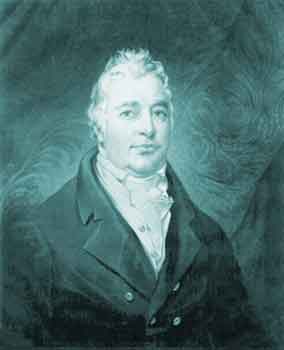
Samuel Oldknow.
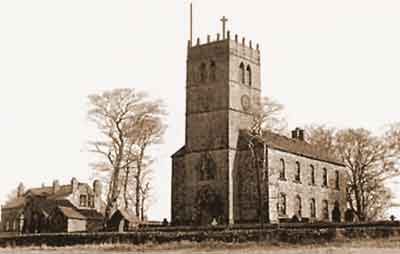
Samuel Oldknow's All Saints Church.
This view is from across Church Ln, Marple, shortly before the church was demolished in 1964 with the exception of the tower. The replacement church is off the picture to the right.
Following Oldknow's death, a memorial plaque to him was placed inside the tower of his church. In 1880 a replacement church was built about 63 yards to the south of his church. The disused church survived until 1964 when it was demolished with the exception of the tower containing a peel of bells and his memorial (NoteThe tower of Samuel Oldknow's All Saints is listed Grade II, List Entry No. 1241882.).
Samuel Oldknow's memorial plaque depicts his head in relief facing to the left with carved drapes hanging on either side below which is an inscription which reads:
Samuel Oldknow died at Mellor Lodge and was buried at All Saints on the 24 Sep 1828 by the incumbent rector, Robert Littler MA. A note in the Register reads, ‘Mr Oldknow was the best friend this Chapel (i.e. the Chapelry of Marple) ever had.’
Subsequently, Samuel Oldknow's Hillgate House on Higher Hillgate, Stockport, was occupied by Christy & Co.
This firm of hat manufacturers was founded by Miller Christie (1748-12 Jun 1820) in 1773 and his works was in Bermondsey, London, later becoming known as the House of Christy. The surname spelling can be either 'Christie' or 'Christy'. A later member of the family to own the company was William Miller Christy (d.1858) and in 1826 Christy & Co bought out a firm of hat manufacturers in Stockport and established their works on Hillgate. The tithe map of the Hillgate district for c.1850 shows that Samuel Christy was the occupier of the works site, the landowner being Lady McDougal.
In c.1833 the company founded Fairfield Mills in Droylsden, situated on Manchester Rd, adjacent to the Hollinwood Branch of the Ashton Canal. This became known as W M Christy & Sons Ltd after William Miller Christy. The success of this company was due to the manufacture of their Royal Turkish Towel, which was introduced at the Great Exhibition of 1851 and was favoured by Queen Victoria. Another successful introduction was the Terry Towel.
In 1859 Wakefield Christy (6 Dec 1835-22 Feb 1898), son of Thomas Christy and great grandson of Miller Christie, was sent from London to manage hat production at their Stockport works. On arrival in Stockport he moved into Hillgate House where he was joined by his mother, Jane Sandwith, sister, Ellen Sophia (b.1837), and brother, Stephen (b.1841). Following the death of Colonel William Davenport Davenport of Bramall Hall in 1869, the Christy family took a seven-year lease on the hall. When the lease expired in 1876, and after 17 years in Stockport, Wakefield Christy returned to London with his family.
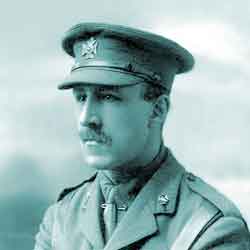 Lt Col Sir Geoffrey Christie-Miller.
Lt Col Sir Geoffrey Christie-Miller.On the 28 Aug 1872 Wakefield Christy married Mary Elizabeth Richardson at Kircassock, County Down. The couple had two children while they were living at Bramall Hall, Sydney Richardson (b.1874) and Edith Mary (b.1875). Sons, Charles Wakefield (b.1877) and Geoffrey (b.1881), were both born at Kensington. As Lt Col Sir Geoffrey Christie-Miller DSO MC, he subsequently owned Christy & Co and in turn the company passed to his son, Lt Col John Aylmer Christie-Miller OBE TD.
Stephen Christy married Blanche Chichester at Tavistock, Devon, in 1876 and the couple moved into Highfield, Bramhall. Their first child, Hugh Archibald, was born at Highfield in 1877. Subsequent children born there were Stephen Henry (b.1879), Margaret Blanche (b.1882) and Muriel Harriet (b.1885). In 1873 Ellen Sophia Christy married John Harvey at St Mary's Church, Stockport.
Thomas Christy and Jane Sandwith Wakefield were married on the 16 Jul 1829. Thomas possibly died in Chelmsford, Essex, in 1846 and his wife died in Chelmsford in 1888, aged 84 years.
In 1890 the family surname of Christy was legally changed to Christie-Miller by Royal Licence.